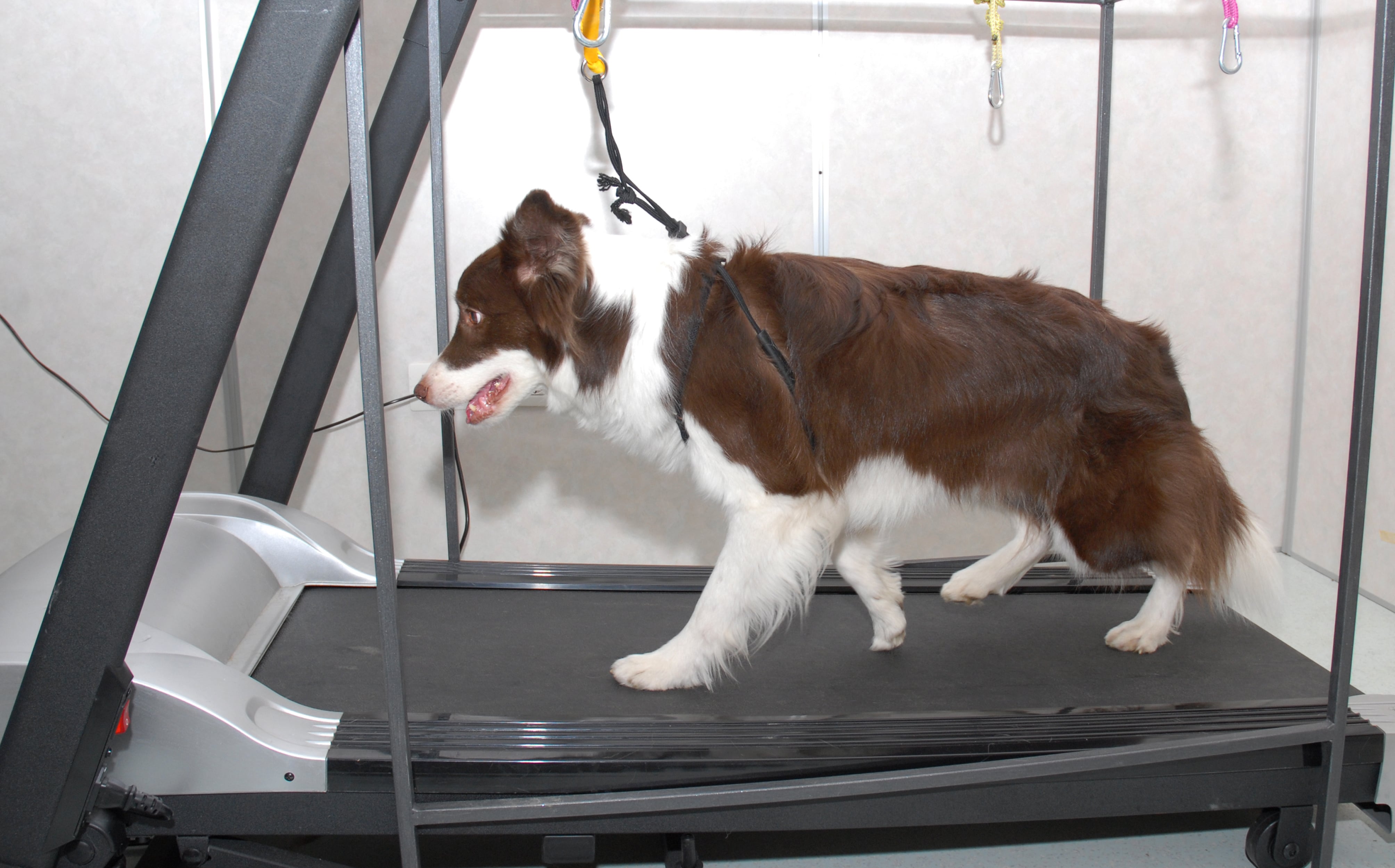Changes Induced By Acute Exercise on a Treadmill in Healthy Military Dogs
Abstract: Changes in physiological parameters that are induced by acute exercise on a treadmill in healthy military dogs have not been thoroughly investigated, especially with regard to age. This study investigated the effects of acute exercise on a treadmill on cardiovascular function, biochemical parameters and gastric antral motility in military dogs.
Thermography was used to assess variations in superficial hindlimb muscle temperature. Nine healthy dogs were distributed into three groups according to their age (Group I: 25 ± 7 months; Group II: 51 ± 12 months; Group III: 95 ± 10 months) and sequentially subjected to running exercise on a treadmill for 12 min (3.2 km/h at 0° incline for 4 min, 6.4 km/h at 0° incline for 4 min and 6.4 km/h at 10° incline for 4 min). Heart rate, systolic and diastolic arterial pressure (DAP), gastric motility, haematocrit and biochemical analyses were performed at rest and after each session of treadmill exercise. Infrared thermographic images of muscles in the pelvic member were taken. Exercise decreased DAP in Group I, increased systolic arterial pressure in Groups II and III and increased mean arterial pressure in Group III (all p < 0.05).
After the exercise protocol, plasma creatine kinase and aspartate aminotransferase levels increased only in Group I (p < 0.05). Exercise increased heart rate and decreased the gastric motility of a solid meal at 180 min in all groups (all p < 0.05). Exercise also elevated temperature in the femoral biceps muscles in Group I compared with the older dogs. The results indicate that acute exercise decreased gastric motility in dogs, regardless of age, and caused more pronounced cardiovascular changes in older dogs than in younger dogs. Acute exercise also altered biochemical parameters and superficial hindlimb muscle temperature in younger military dogs.
Reference: R W Queiroz, V L Silva, D R Rocha, D S Costa, S H N Turco, M T B Silva, A A Santos, M B L Oliveira, A S R Pereira, R C Palheta-Junior (2018) J Anim Physiol Anim Nutr (Berl) Feb;102(1):122- 130
| Interested in learning more about thermal imaging? Request a demonstration with Digatherm and discover how veterinary thermography can help you find problem areas faster and easily monitor treatment progress. |

